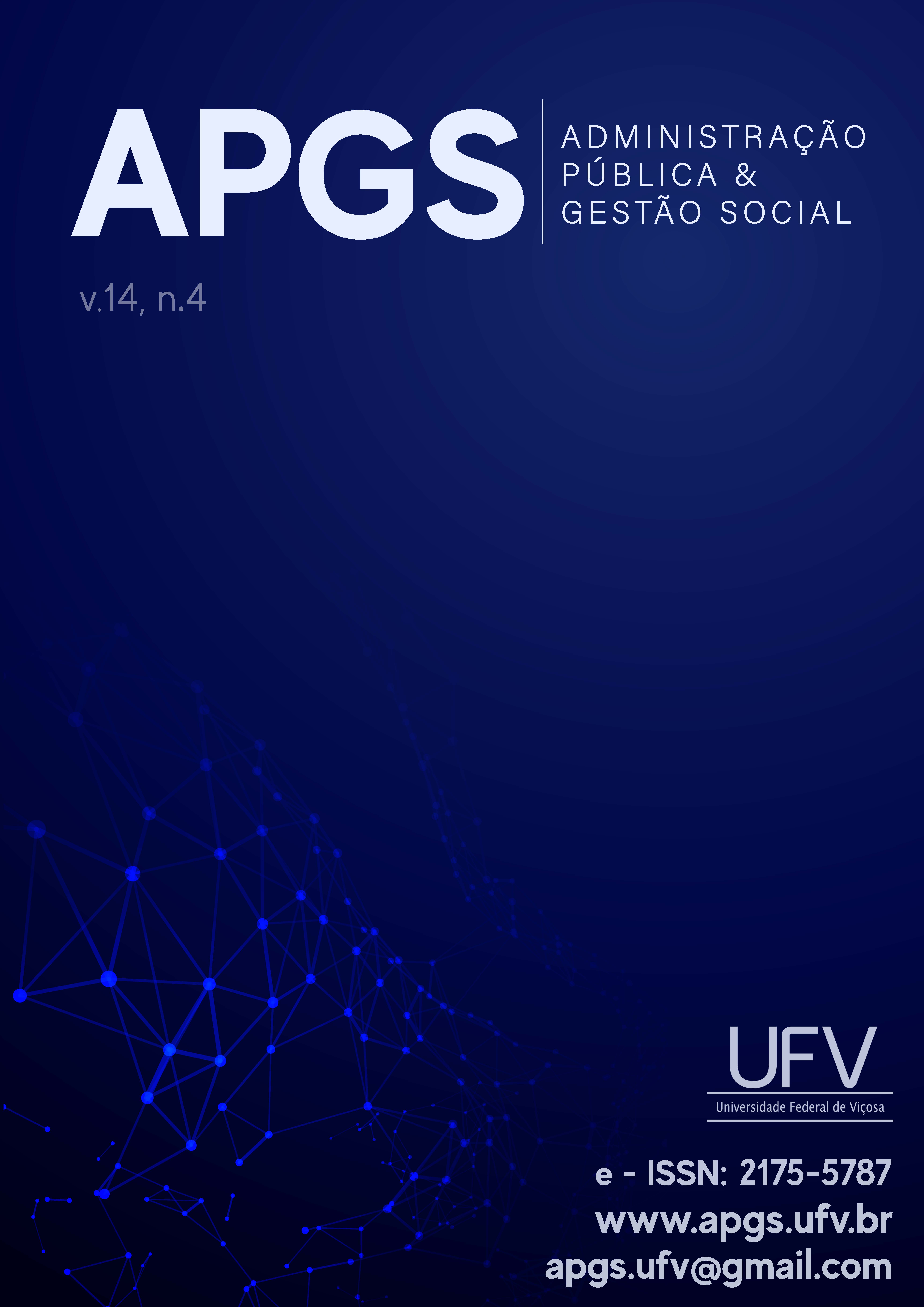Innovation in the Ecuadorean public sector during the COVID-19 pandemic: current trends and prospects for future research
DOI:
https://doi.org/10.21118/apgs.v14i4.13287Abstract
Objective: ?e aim of the article is to identify the types of innovations produced by public sector organizations in Ecuador during
the first months of the COVID-19 pandemic.
Theoretical framework: ?e paper builds on systematic reviews of publications on public sector innovation to identify types of
innovations, antecedents of organizations, both at the external and internal organizational levels, and outcomes of the innovations.
Methodology: ?e paper is exploratory in nature and mixes quantitative and qualitative data to characterize innovations. For this,
an online survey questionnaire was sent to public servants to identify innovations, and a structured interview was then carried out
to flesh out some of the details of the processes of innovation reported.
Results: Findings show that most innovations in the Ecuadorean public sector are top-down in nature, and relate to adopting
technologies to support existing interventions. ?ese technologies; however, go beyond those used for facilitating telework.
Moreover, most innovations are produced in organizations perceived as centralized, where there is continuous support for
innovation. The main finding of this research relates to the presence of specialized units within public sector organizations, which
support innovation and help the development of interorganizational networks. This type of unit has been overlooked in the
literature and require further investigation in regards to when and how they bridge between organizations to facilitate lasting
innovations.
Originality: The article introduces a distinction between organizations that have direct or indirect interactions with clients or
citizens which helps to take stock of the incentives they may have for innovating. ?e article then identifies the different types of
innovations produced in public sector organizations when this substantive difference is taken into account.
Teoretical and practical contributions: ?e study offers support to findings made in other contexts, while also contributes
with findings that add qualitative depth to the relationships between organizational characteristics, innovation processes, external
factors and outcomes. It highlights the importance of supporting and strengthening the units specialized on innovation to make
the most out of crises and structural reform.
Downloads
Published
How to Cite
Issue
Section
License

This work is licensed under a Creative Commons Attribution-NonCommercial-NoDerivatives 3.0 Unported License.
Authors who publish in the Journal of Public Administration and Management Social (APGS) must agree to the following terms:
• Authors retain copyright and give the journal the rightof first publication with the work simultaneously licensed underthe Creative Commons Attribution License, permitting sharingwork with the recognition of the work of authorship and publicationstarting in this journal.
• Authors have authorization to assume additional contractsseparately for non-exclusive distribution of the work releasepublished in this journal (eg. publish in institutional repositories oras a book), with an acknowledgment of its publicationstarting this journal.
• Authors are permitted and encouraged to post theirwork online (eg, in institutional repositories or on their websitepersonnel) at any point before or during the submission process, asit can generate criticism and helpful suggestions, as well asincrease the impact and citation of published work.
• Authors reserve the right of the editors of this journal to make in theoriginal works, alterations of normative order, orthographic andgrammatical, aiming at complying with its editorial policy and keep thedefault cult of language, respecting, however, the authors' style.
• Authors assume exclusive responsibility for their opinionsgiven in the articles published in this journal.



